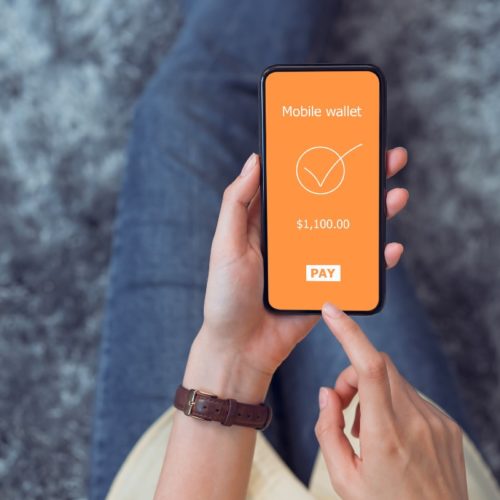The best national banks offer a mix of account options, a streamlined mobile banking platform, and an expansive ATM network.
Every bank has its pros and cons, so we evaluated the best nationwide banks and today’s current promotions to help you choose, no matter where you live across the US.
8 Best National Banks
Here are the top nationwide banks for 2025:
1. Chase Bank
- 🏆 Best Overall
- Branches: 4,700+
- ATMs: 15,000+
- J.D. Power Score: 674
As the largest bank in the US, Chase has a lot to offer. Its credit cards have some of the best perks in the industry, and the bank touts impressive options for personal and business checking. I personally use Chase Bank for my business checking needs.
One of the Chase’s biggest draws is its sign-up bonuses for new customers. In addition to offering highly lucrative sign-up bonuses for credit cards, Chase regularly offers sizable cash bonuses for its checking and savings accounts.
My biggest strike against Chase is that it doesn’t offer any high-yield checking or savings accounts, with meager interest rates compared to online banks.
In terms of customer experience, Chase is highly rated, securing second place in J.D. Power’s 2023 National Banking Satisfaction Study – plus I have reached out to Chase Banks customer service team and have had a great experience.
Pros:
- Often runs sign-up bonuses
- Has many options for personal banking
- Great customer service
Cons:
- Low APYs
- Monthly maintenance fees if you don’t meet minimum balance requirements
Learn More:
- Current Chase Bank Promotions
- Read our full Chase Bank Review
2. US Bank
- Branches: 2,300+
- ATMs: 4,700+
- J.D. Power Score: 652
If you live in the West, Midwest, Florida, or North Carolina, U.S. Bank is worth considering.
In our opinion, one of the bank’s most significant advantages is its flexible account options. You can choose from several checking accounts, savings, and CDs with competitive rates. They also offer several great credit cards.
It also has the other products you would expect from a large national bank, like loans, investment options, wealth management resources, and business banking.
US Bank ranked among the nation’s top banks in J.D. Power’s 2023 National Banking Satisfaction Study.
Pros:
- Great mobile banking experience
- Many account options for all banking needs
- 24/7 customer support
Cons:
- Monthly maintenance fees on most accounts (with the option to waive)
- Low APYs
Learn More:
- See all Current U.S. Bank Promotions
3. Wells Fargo
- Branches: 4,350+
- ATMs: 12,000+
- J.D. Power Score: 625
Wells Fargo leads the pack in terms of nationwide accessibility. Wells Fargo gives customers access to all the standard banking products, such as deposit accounts, credit cards, loans, and investing accounts.
Wells Fargo’s basic checking accounts are notorious for charging monthly fees ($10-$30), but there are several ways to waive the fees, like making a set number of debit card transactions or meeting minimum deposit requirements each month.
In my opinion, Wells Fargo is worth considering if you prefer a bank with a vast ATM and branch network and a wealth of account options.
Pros:
- Makes banking easy with mobile and online banking
- Offers a wide selection of banking products
- Monthly fees are easily waived
Cons:
- High minimum deposit requirement for CDs
- Charges overdraft fees even though most banks don’t charge them any more
Learn More:
- See all Current Wells Fargo Promotions
4. Discover Bank
- Branches: 1
- ATMs: 60,000+
- J.D. Power Score: 730
If you’re under the impression that Discover is a credit card company and nothing more, you’re mistaken. Discover has a full suite of banking products comparable to the other banks on this list.
While Discover is an online bank and excels at offering a user-friendly online banking experience, they do have one physical location, The Greenwood Trust Company in Delaware (Discover acquired in 2000).
Using the mobile app and website, you can access checking, MMAs, CDs, savings accounts, personal loans, student loans, IRAs, and home loans. You also get access to over 60,000 fee-free ATMs with Discover’s checking accounts.
One of the only things missing from the picture is business banking. Still, the bank’s online savings accounts, money market accounts, and CDs have competitive to excellent interest rates, and the website has a friendly interface.
Pros:
- User-friendly mobile banking
- Large selection of banking products
- High CD rates
Cons:
- No physical branches
- High minimum deposit requirements for CDs
Learn More:
- Current Discover Bank Promotions
- Read our full Discover Bank Review
5. Bank of America
- Branches: 3,750+
- ATMs: 15,000+
- J.D. Power Score: 648
While Bank of America’s branch footprint has shrunk significantly as it’s shifted its focus to mobile banking, many bank branches remain nationally.
You can choose from various checking and saving accounts, CDs, credit cards, mortgages, and auto loans. You can also open and manage investment accounts with Merrill, BofA’s intuitive investing platform.
Bank of America has excellent customer support; you can call them from 8 a.m. to 11 p.m. on weekdays and from 8 a.m. to 8 p.m. on Saturdays and Sundays. Plus, you can message the bank on Facebook or Twitter anytime and find extensive resources online.
That said, interest rates on its checking and savings accounts are pretty low. While BofA’s checking accounts have low fees, you can avoid them with qualifying activities.
Pros:
- Powerful mobile banking platform
- Large number of branches are still in existence
- Large account selection
Cons:
- Low APYs
- Charges overdraft fees
Learn More:
6. PNC Bank
- Branches: 2,350+
- ATMs: 60,000+
- J.D. Power Score: 651
Since its merger with BBVA, PNC has solidified an even larger national presence in brick-and-mortar locations.
PNC’s Virtual Wallet is one of its most popular products. It’s a bundle of accounts featuring checking, short-term savings, and long-term savings accounts in one package.
You can also use the Virtual Wallet to pay bills, manage cash flow, and set budgeting goals.
PNC additionally offers credit cards and specialized military and student bank accounts, with additional business and commercial banking services available.
Pros:
- Unique banking options with checking and savings in one account
- Offers budgeting tools
- Large ATM network
Cons:
- Charges overdraft fees
- Branches not available nationwide
7. Ally
- Branches: 0
- ATMs: 43,000+
- J.D. Power Score: 729
Ally is one of the best online banks in the industry, gaining popularity in recent years. The bank offers checking, savings, CD accounts, home, auto, personal loans, and investing accounts.
One of the main reasons people are drawn to Ally is the higher interest rate it offers on its savings accounts. Ally’s rates are much higher than what brick-and-mortar banks offer.
Interest on Ally’s checking accounts is modest but still higher than traditional banks.
There are no monthly fees or minimum balance requirements for Ally’s checking and savings accounts.
Although the bank is online-only, you can access 43,000+ Allpoint ATMs, making it convenient to withdraw cash.
While Ally wasn’t featured in J.D. Power’s 2023 National Banking Satisfaction Study, it earned the third-highest spot in its National Direct Banking Satisfaction Study.
Pros:
- High APYs on checking and savings
- User-friendly mobile and online banking platform
- No monthly fees
Cons:
- No physical branches
- Doesn’t accept cash deposits
Learn More:
- Read our full Ally Bank Review
8. Citibank
- Branches: 650+
- ATMs: 65,000+
- J.D. Power Score: 649
One of the “Big Four” banks, Citi is the nation’s third-largest bank in terms of assets.
As you’d expect, it has several banking, lending, and investing products and popular rewards credit cards. This includes the Citi Double Cash Credit Card, which gives you unlimited 2% cashback on all spending categories.
While its checking account doesn’t offer high interest rates, Citi’s Accelerate Savings account offers an impressive APY on all account balances in some areas.
Citi is also known for offering rewarding sign-up bonuses for new checking accounts.
Pros:
- Option for higher rates with relationship tiers with high average daily balances
- Many credit card options with great rewards
- Offers sign-up bonuses often
Cons:
- High maintenance fee if you don’t meet the minimum balance requirements
- Not available nationwide
Learn More:
- See all Current Citibank Promotions
How to Choose the Right National Bank
Choosing the right national bank is a big decision. As you can see from our list, you have many options, but knowing what to look for is important.
Low or No Fees
Fees take away from your savings and interest earnings. Pay close attention to the fees banks charge, especially the monthly maintenance fees. Banks that charge them usually offer ways to waive them with minimum balance requirements or a certain number of debit card transactions monthly.
Ensure you can meet the requirements to waive the fees without stress or look for an account that doesn’t charge any fees.
Convenient ATMs
ATM fees are another way to decrease your savings if you aren’t careful. If you use ATMs often, ensure the ATM network of the national bank you choose is convenient to you. Most of the banks in our list have thousands of ATM options, but check their locations to ensure they are close to you.
High APYs
Brick-and-mortar banks aren’t known for their high APYs, but by shopping around, you may find some good interest rates, especially on savings accounts.
Compare your options based on the balance you think you’ll keep and the features you need in a bank account. Sometimes you must sacrifice a high APY for beneficial features, but not always, especially if you can work with an online bank like Ally Bank.
Convenient Branches
If you would like to bank in person versus online, look for a national bank with branches local to you. Check the bank’s operating hours to ensure they are convenient and offer online or mobile banking options when you need banking services when the bank isn’t open.
Frequently Asked Questions
Who Is The Best Nationwide Bank?
The best nationwide bank with a physician presence has to be Chase. Chase has over 4,700 branches and over 16,000 ATMs. In addition, many of Chase’s credit cards have some of the banking industry’s best sign-up bonuses and travel perks. Even their checking accounts regularly have nice sign-up bonuses.
The most significant thing Chase lacks is checking/savings accounts with high interest rates. If you have to have that, you may want to look elsewhere.
Which Banks Are All Over The United States?
Bank of America, Chase, and Wells Fargo easily have the largest U.S. presence of any of the best banks in terms of brick-and-mortar locations.
These three banks have a combined 17,000+ branches and 45,000+ ATMs nationwide. If you are looking for a bank with brick-and-mortar locations, any of these banks are likely to have them in your area.
What Are The Big Four Banks In The US?
The Big Four banks in the United States are Chase, Wells Fargo, Citibank, and Bank of America. They are the largest in the industry and have the most branches, ATMs, and the best-rated customer service and account options.
Of course, like most big, national banks, they also have some of the lowest APYs, so you must decide if you want to sacrifice your APY for more accessibility and features.
How Do You Tell If A Bank Is A National Bank?
National banks must be a part of the Federal Reserve System and FDIC. They must also be approved by the Office of the Comptroller of Currency, not just a state agency. You can also search the list of national banks.
Methodology
To determine the best national banks, we evaluated several institutions and rated them based on the following factors:
- Third-party ratings: We factor in third-party ratings from sources like the BBB, J.D. Power’s Banking Mobile App Satisfaction Survey, and the J.D. Power U.S. Retail Banking Satisfaction Survey to assess each bank’s reputation with customers.
- Products: We also look at each bank’s product lineup, factoring in how many checking, savings, lending, and investment products they offer.
- Account features: To gauge how competitive the products are, we compare features like their fees, account minimums, APY, and welcome bonuses.
- User experience: Additionally, we look into each bank’s online experience, mobile app, customer service availability, and online tools and resources, as well as customer reviews and industry studies.
- Branches and ATM locations: We look into each bank’s availability to see how many brick-and-mortar bank and ATM locations there are and consider their business hours.
Resources:
J.D. Power’s 2023 National Banking Satisfaction Study
December 2023 Federal Reserve Large Commercial Banks Statistical Release





No comments yet. Add your own